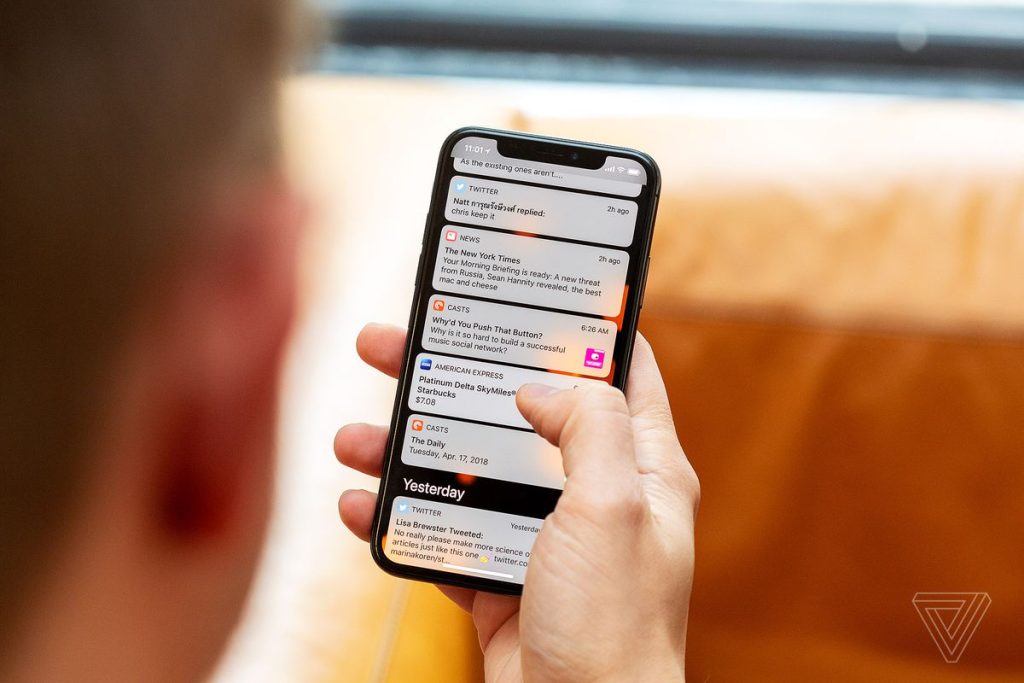
What Are Push Notifications?
Push notifications are short messages or alerts sent directly to a user’s device, such as a smartphone, tablet, or computer, from an app or website. They appear on the device’s home screen or in the notification center, even when the user is not actively using the app. Push notifications can deliver a wide range of content, including updates, reminders, promotions, and personalized messages, helping to engage users and drive interaction. By providing timely and relevant information, push notifications can enhance user experience, encourage app usage, and increase customer retention. They are an effective tool for businesses to communicate directly with their audience, keeping users informed and engaged with the brand.
Updates and News
Personalization and Targeting
Immediate Reach
Case Study
Watch a brief video which further explains push notifications:
FAQ
Frequently Asked Questions
Yes, push notifications can be highly targeted to specific user segments. This targeting is one of the key advantages of using push notifications in marketing. Here’s how it works:
1. User Segmentation
- Demographic Segmentation: Users can be grouped based on demographics such as age, gender, location, and interests, allowing for tailored messaging that resonates with each group.
- Behavioral Segmentation: Users can be categorized based on their behavior within the app or website, such as purchase history, browsing patterns, or engagement levels. This enables targeted notifications based on user actions.
2. Personalized Messaging
- Custom Content: By analyzing user data, businesses can create personalized messages that address the specific needs and interests of different segments, leading to higher engagement and conversion rates.
- Dynamic Content: Some platforms allow for dynamic content within push notifications, enabling messages to change based on user attributes or actions.
3. Automated Triggers
- Event-Driven Notifications: Push notifications can be set to trigger automatically based on user actions, such as completing a purchase, abandoning a cart, or reaching a specific milestone in an app. This ensures timely and relevant communication.
- Lifecycle Campaigns: Businesses can implement lifecycle marketing strategies, sending different messages based on where users are in their journey (e.g., new users vs. returning customers).
4. Analytics and Insights
- Performance Tracking: Analyzing engagement metrics for different segments helps businesses refine their targeting strategies, allowing for continuous improvement in messaging and effectiveness.
- A/B Testing: Testing different messages on various segments can provide insights into what works best, helping to optimize future push notifications.
By leveraging segmentation, personalization, and data-driven insights, businesses can effectively target push notifications to specific user groups, enhancing engagement and driving better results.
Push notifications can significantly enhance your marketing strategy by providing direct, real-time communication with your audience. They help increase user engagement, as notifications can remind users of important updates, promotions, or content. This immediacy often leads to higher open and click-through rates compared to other channels like email. Additionally, push notifications can be personalized based on user behavior, preferences, and demographics, making your messages more relevant and increasing the likelihood of conversions. By effectively utilizing push notifications, you can drive traffic to your website or app, improve customer retention, and enhance overall user experience.
Optimizing push notification campaigns involves a systematic approach to enhance engagement and achieve better results. Here’s a detailed process of how we do it:
1. Define Clear Objectives
- Set Goals: Determine what you want to achieve with your push notifications—whether it’s increasing app engagement, driving sales, or promoting new content.
- Identify Key Performance Indicators (KPIs): Choose relevant metrics to measure success, such as open rates, click-through rates, and conversion rates.
2. Segment Your Audience
- Behavioral Segmentation: Group users based on their actions within your app or website, such as purchase history or frequency of visits. This allows for targeted messaging.
- Demographic Segmentation: Consider factors like age, location, and preferences to tailor your notifications more effectively.
3. Personalize Content
- Dynamic Messaging: Use data to create personalized notifications that resonate with individual users. Include their names, relevant product recommendations, or tailored offers.
- Test Variations: A/B test different message formats and content to identify what appeals most to different segments.
4. Optimize Timing and Frequency
- Analyze Engagement Patterns: Use analytics to determine when users are most active and likely to engage with notifications. Schedule messages accordingly.
- Adjust Frequency: Find the right balance in sending notifications—too many can lead to opt-outs, while too few may miss engagement opportunities.
5. Leverage A/B Testing
- Test Different Elements: Experiment with various aspects, such as message content, headlines, images, and CTAs, to see which combinations drive better engagement.
- Learn from Results: Analyze the outcomes of these tests to refine your messaging strategy continually.
6. Monitor and Analyze Performance
- Real-Time Analytics: Use analytics tools to track performance metrics in real time, allowing for quick adjustments as needed.
- Post-Campaign Analysis: After a campaign ends, conduct a thorough analysis of the data to identify trends, strengths, and areas for improvement.
7. Incorporate User Feedback
- Gather Insights: Encourage users to provide feedback through surveys or prompts after engaging with notifications. This can provide valuable insights into their preferences.
- Adjust Strategy: Use the feedback to refine your approach and address any concerns or preferences expressed by users.
8. Stay Updated with Best Practices
- Industry Trends: Keep abreast of the latest trends and best practices in push notifications to ensure your strategy remains relevant and effective.
- Continuous Learning: Attend webinars, read industry articles, and participate in forums to gather new ideas and techniques for optimization.
By following this structured approach to optimizing push notification campaigns, you can enhance user engagement, drive better results, and create a more effective communication strategy.
Effectively using push notifications to enhance user engagement involves a strategic approach that prioritizes relevance, timing, and personalization. Here are some of our key strategies:
1. Personalize Notifications
- Tailor Content: Use user data to create personalized messages that resonate with individual preferences and behaviors. Mention the user’s name or reference their past interactions.
- Segment Your Audience: Group users based on demographics, behaviors, or interests, and send targeted notifications to each segment to improve relevance.
2. Provide Value
- Offer Promotions: Send notifications about exclusive deals, discounts, or flash sales that encourage users to take immediate action.
- Share Relevant Content: Notify users of new articles, videos, or features that align with their interests, keeping them informed and engaged with your brand.
3. Timely Reminders
- Event-Based Notifications: Send reminders for upcoming events, product launches, or significant dates that matter to users, helping them stay organized and engaged.
- Abandoned Cart Alerts: Remind users who have left items in their shopping cart, encouraging them to complete their purchase with a gentle nudge.
4. Encourage Interaction
- Calls to Action: Include clear and compelling calls to action (CTAs) that prompt users to engage, such as “Shop Now,” “Explore More,” or “Join the Conversation.”
- Interactive Elements: Use rich notifications that allow users to respond directly, such as quick polls or buttons for immediate actions.
5. Frequency and Timing
- Optimal Sending Times: Analyze user activity data to determine the best times to send notifications when users are most likely to engage.
- Balanced Frequency: Avoid overwhelming users with too many notifications. Find a sweet spot that keeps your brand top-of-mind without causing fatigue.
6. Feedback Loop
- Gather Insights: Encourage users to provide feedback on notifications they receive. Use surveys or prompts to understand their preferences.
- Adapt Based on Feedback: Regularly review feedback and engagement metrics to refine your notification strategy, ensuring it aligns with user expectations.
7. Leverage User Milestones
- Celebrate Achievements: Recognize user milestones, such as anniversaries, birthdays, or usage milestones, with special notifications that make users feel valued.
- Gamification Elements: Incorporate gamified elements, such as rewards for engagement or participation in challenges, to boost interaction.
8. Track and Analyze Performance
- Monitor Engagement Metrics: Use analytics tools to track open rates, click-through rates, and conversion rates for your push notifications.
- Continuous Improvement: Analyze performance data to identify successful strategies and areas for enhancement, allowing you to optimize future campaigns.
By implementing these strategies, we effectively use push notifications to boost user engagement, foster loyalty, and drive desired actions, ultimately creating a more connected and active user base.
Ensuring compliance with regulations when sending push notifications involves several key steps. Here’s how we go about it:
1. Obtain User Consent
- Opt-In Mechanism: Ensure that users actively opt in to receive push notifications. This can be done through a clear prompt when they first use your app or website.
- Transparent Communication: Clearly explain what types of notifications they will receive and how often, so users know what to expect.
2. Provide Clear Options to Manage Preferences
- Notification Settings: Allow users to customize their notification preferences easily. They should be able to choose what types of messages they want to receive and opt-out of those they don’t.
- Easy Opt-Out Process: Make it simple for users to unsubscribe from push notifications at any time, ensuring they can easily manage their preferences.
3. Follow Data Protection Regulations
- GDPR Compliance: If you have users in the European Union, ensure compliance with the General Data Protection Regulation (GDPR). This includes obtaining explicit consent and providing users with the right to access and delete their data.
- CCPA Compliance: For users in California, adhere to the California Consumer Privacy Act (CCPA), which requires clear disclosures about data collection and the right for users to opt-out of data sharing.
4. Be Transparent About Data Usage
- Privacy Policy: Maintain a clear and accessible privacy policy that outlines how you collect, use, and store user data related to push notifications.
- Inform Users: If user data will be used for targeting notifications, make sure users are informed and have consented to this practice.
5. Monitor Compliance Regularly
- Stay Updated: Keep abreast of changes in data protection laws and regulations that may affect your push notification practices.
- Internal Audits: Regularly review your push notification processes to ensure ongoing compliance and adjust your policies as needed.
6. Provide Value in Notifications
- Avoid Spammy Content: Ensure that your notifications are relevant and provide value to users. This not only improves engagement but also helps reduce complaints and opt-outs.
By implementing these practices, Summit Active Media can ensure compliance with relevant regulations while effectively using push notifications to engage with our audience. This builds trust and fosters a positive relationship with our users.
